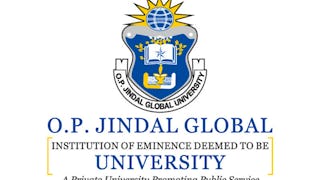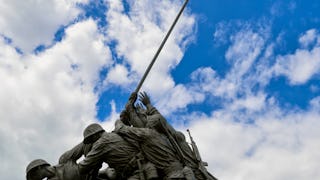Welcome to the Power and Foreign Policy in International Relations course! This course acquaints you with how power matters in the conduct of international relations and how it affects the strategies and tactics of a nation-state in dealing with other nation-states. It demonstrates the link between a country’s ranking in the international system and the means and methods it adopts to deal with the rest of the world. The course begins with introducing a few concepts about what constitutes power in world affairs, how it is calculated, and how the international power configuration changes over time. You will also learn what foreign policy means and what its constituent elements, strategies, or activities are.

Gain next-level skills with Coursera Plus for $199 (regularly $399). Save now.

Power and Foreign Policy in International Relations

Instructor: Sreeram Sundar Chaulia
21,112 already enrolled
Included with
(331 reviews)
Recommended experience
What you'll learn
Infer why any given nation-state behaves in a certain way in the world.
Explain how relative strength and weakness create opportunities and constraints in foreign policymaking.
Analyze the causes for power shifts and changes in the international order over time.
Skills you'll gain
Details to know

Add to your LinkedIn profile
See how employees at top companies are mastering in-demand skills

There are 7 modules in this course
Welcome to the Power and Foreign Policy in International Relations course! This course acquaints you with how power matters in the conduct of international relations and how it affects the strategies and tactics of a nation-state in dealing with other nation-states. It demonstrates the link between a country’s ranking in the international system and the means and methods it adopts to deal with the rest of the world. The course begins with introducing a few concepts about what constitutes power in world affairs, how it is calculated, and how the international power configuration changes over time. You will also learn what foreign policy means and what its constituent elements, strategies, or activities are. Then, the course delves deeper into case studies of contemporary great powers, middle powers, and small powers. These empirical case studies will raise the general knowledge of students about current developments and trends in foreign relations from different regions of the world. The examples of foreign policy approaches and decisions of nation-states, based on world news events of recent times, will help students to figure out the essence of world politics as it is being practiced in present times and prepare students to anticipate the future international orders to come.
What's included
2 videos1 reading
In this module, you will learn about what power means in international relations and how it is measured in terms of specific attributes of a nation-state. You will also learn about core concepts such as international power configuration and international order and the role of units (nation-states and non-state actors) in these structures. The module also analyzes what foreign policy means, how it is formulated on the basis of national interests, why a nation-state adopts a particular type of foreign policy, and how all this is inextricably linked to its power position in the international system. By the end of this module, you will gain an insight into why a great power behaves in a manner that is different from the behavior of a middle power or a small power.
What's included
10 videos4 readings1 assignment1 discussion prompt
In this module, you will build upon the earlier awareness of power and foreign policy behavior. You will closely examine the conduct of the USA, which has been a key great power since the end of World War II, and how it shaped the post-World War II international system through a variety of strategies and means. You will also gain an insight into how there was a shift in the policies of the USA in tandem with the changes in the international power configuration from the Cold War era of bipolarity to the post-1991 unipolar period and then again from bipolarity to the present emergent multipolar world order. By the end of this module, you can appreciate how the USA has dealt with fellow great powers and weaker powers and what kind of grand strategy has motivated the USA since 1945.
What's included
10 videos3 readings1 assignment1 discussion prompt
In this module, you will learn about concepts like power and foreign policy in the context of an emerging middle power, India, which is estimated to have the potential of becoming a great power. You will also learn how India’s rise in the past two decades is closely associated with its high economic growth, its international multilateral alignments and strategic partnerships, and the vision of its political leadership to attain the status of a leading power in the world. The module will take you along India’s journey from being a sub-regional power in South Asia to an Asian regional power and an important balancing power in present times in the broader Indo-Pacific. Finally, you will gain an insight into the factors pushing India up in the international power configurations and the domestic political obstacles to its rise.
What's included
10 videos3 readings1 assignment1 discussion prompt
In this module, you will learn about the tiny Persian Gulf monarchy of Qatar, which has adopted a foreign policy mix of alliance with the USA while simultaneously pursuing an independent and ambitious form of assertiveness vis-à-vis its regional competitors. The module discusses the rise of Qatar as a fossil fuel colossus and how it parlayed its natural resource abundance to punch above its weight in the Middle East and global energy institutions. You will also learn why Qatar moved to a policy of supporting Islamist political groups in the region and beyond and how it capitalized on being a small power to become a moderator and mediator in multiple armed conflict zones. Finally, the module also explains how regime survival is a critical driver of foreign policy in this authoritarian country.
What's included
10 videos3 readings1 assignment1 discussion prompt
This module describes the learning objectives, project brief, review criteria, and submission instructions for the Peer Review Individual Assignment for the course.
What's included
1 peer review
What's included
1 video
Prepare for a degree
Taking this course by O.P. Jindal Global University may provide you with a preview of the topics, materials and instructors in a related degree program which can help you decide if the topic or university is right for you.
Instructor

Offered by
Explore more from Governance and Society
 Status: Preview
Status: PreviewO.P. Jindal Global University
 Status: Preview
Status: PreviewUniversità di Napoli Federico II
 Status: Preview
Status: PreviewO.P. Jindal Global University
 Status: Free Trial
Status: Free TrialO.P. Jindal Global University
Why people choose Coursera for their career




Learner reviews
331 reviews
- 5 stars
77.03%
- 4 stars
16.91%
- 3 stars
3.92%
- 2 stars
1.20%
- 1 star
0.90%
Showing 3 of 331
Reviewed on Oct 27, 2024
The course highlighted the ways power is influential on the world stage, and is especially insightful when it comes to small powers.
Reviewed on Aug 27, 2023
This course is the best suitable for IR students to understand Foreign Policy.
Reviewed on Feb 21, 2023
Excellent course to enhance understanding of world geopolitics.
Frequently asked questions
This course stacks into the Foreign Policy of Great, Middle and Small Powers course in the Master of Arts degree International Relations, Security and Strategy (MA IRSS) and covers four weeks of material that is taught in the course. To access the MA Degree in International Relations, Security and Strategy click here.
To access the course materials, assignments and to earn a Certificate, you will need to purchase the Certificate experience when you enroll in a course. You can try a Free Trial instead, or apply for Financial Aid. The course may offer 'Full Course, No Certificate' instead. This option lets you see all course materials, submit required assessments, and get a final grade. This also means that you will not be able to purchase a Certificate experience.
When you purchase a Certificate you get access to all course materials, including graded assignments. Upon completing the course, your electronic Certificate will be added to your Accomplishments page - from there, you can print your Certificate or add it to your LinkedIn profile.
More questions
Financial aid available,
¹ Some assignments in this course are AI-graded. For these assignments, your data will be used in accordance with Coursera's Privacy Notice.





